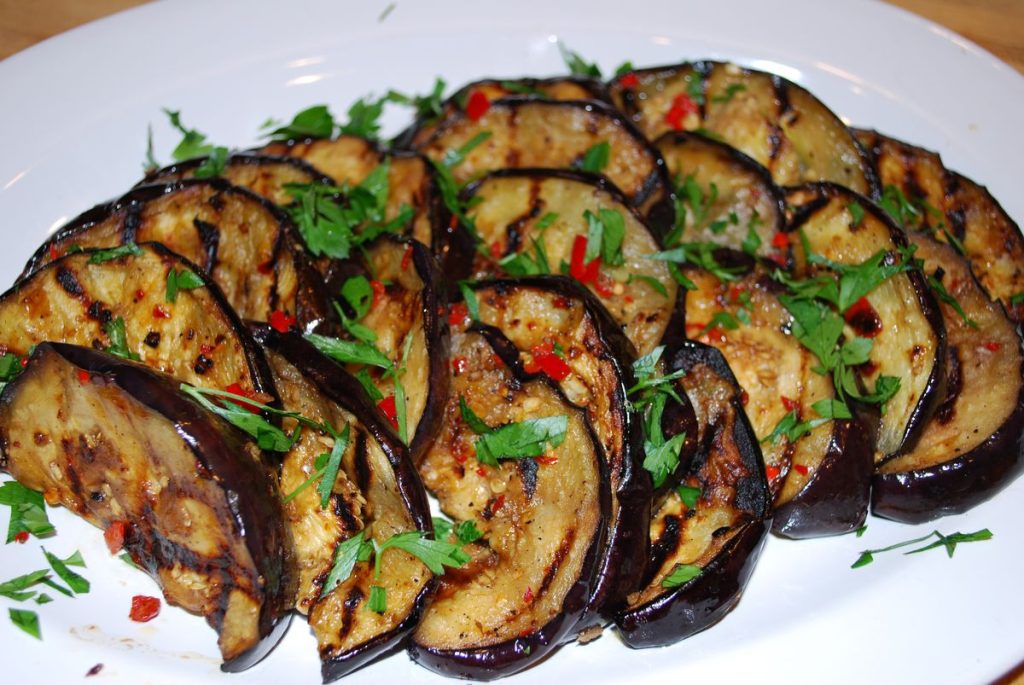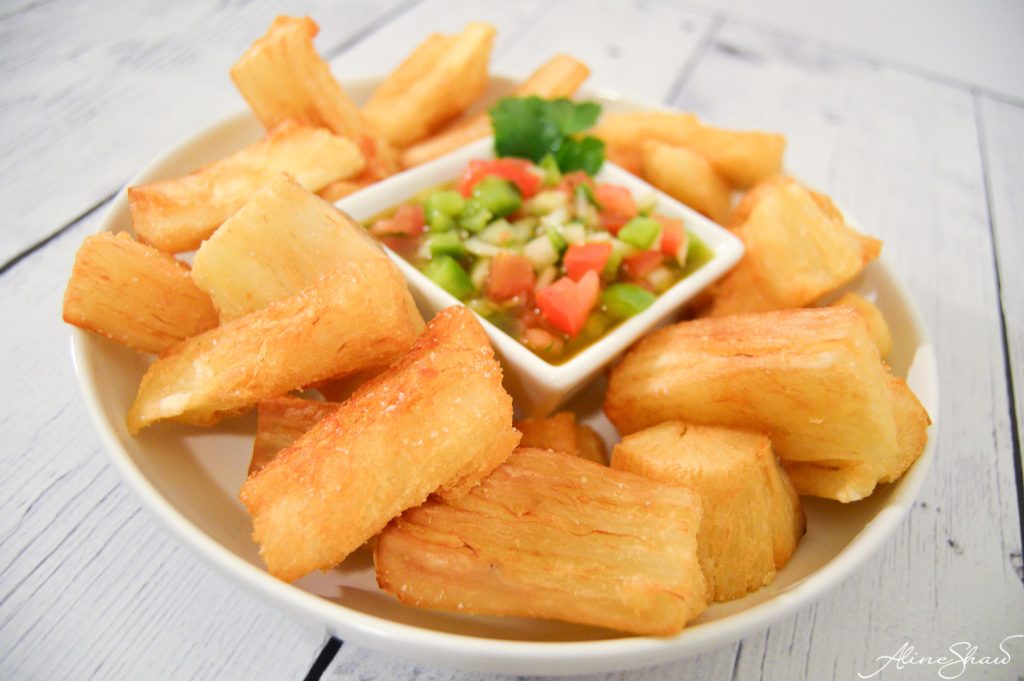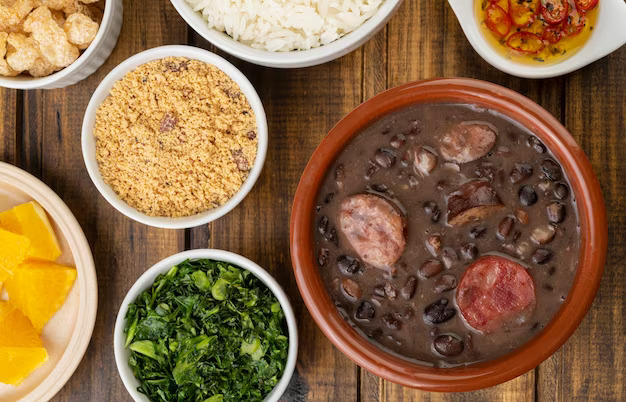A cheap yet tasty way to try some unique Brazilian vegetables is to hop into a food-by-the-pound restaurant called Comida-a-quilo restaurant, where you weigh the food on your plate and pay accordingly.
Firstly, you can look for jiló (Scarlet eggplant) and xuxu (chayote squash), and some might have Casquinha de Siri (Stuffed Crab Shells). Also, some offer Torresmo (pork rind), which are pork cracklings or pork rinds.



Additionally, you may come across cupim (beef hump) or picanha (ramp cap), which are cuts of meat. Most of them will have the vinaigrette served along with the steaks.



Also, you can try some salads, especially those with Brazilian leaves, such as chicória (green vegetables which taste like chicory). Lastly, try all forms of cassava, manioc, and yuca; in Brazil, they are called mandioca.

Mandioca (manioc or cassava)
In English, manioc, cassava, and yuca are all the same roots. This root, mandioca, can be served boiled, deep-fried, or as a puree—in other words, smashed or mashed—and can accompany anything that a potato could.



The root Manioc = cassava = yuca, is a far healthier carbohydrate than potatoes, rice, wheat, or corn. It is a complex carbohydrate full of fiber, tons of nutrients, and slow-release sugars. Therefore, whenever it shows up on the menu, do opt for it, especially fried cassava, which is called aipim frito in Rio de Janeiro. In the rest of Brazil, it’s called mandioca frita. In the northeast of Brazil, it’s called macaxeira frita.
While visiting a comida-a-quilo (sometimes comida-a-kilo), you can find traditional Brazilian dishes such as:
- Escondidinho (Brazilian chicken shepherds pie)
- Arrumadinho (Meat beans, and vegetables)
- Feijoada (Black bean stew)
- Feijão tropeiro (Trooper beans)
- Arroz de carreteiro (Wagoner’s Rice)





These are all delicious and worth investing your lunches in.
Show this list to the manager and they may help point out the dishes they might be serving that day.
More articles about fruits, desserts, and bar foods



